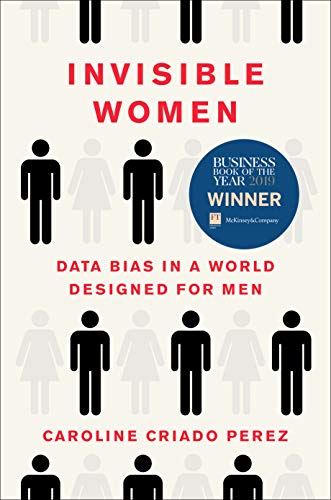
Author: Caroline Criado Perez
Topics: Gender Bias, Gender Equality, Women’s Rights, Women’s Health and Safety
Summary
“When it comes to the lives of the other half of humanity, there is often nothing but silence. And these silences are everywhere.” There is an ever-present “female-shaped absence” in our culture’s media, news, and entertainment, spanning the more critical aspects, such as city planning and healthcare, to designing daily objects, work, and safety gear. This missing information is called the “gender data gap,” and it has wide-reaching, sometimes fatal, consequences for women. Invisible Women exposes the consequences of systemically forgetting women. Perez offers that these cultural shuns are neither intentional nor malicious, but the consequences are unjust and must be deliberately challenged. If we want the world to be a safe place that works for everyone, we need data about women to be represented, and even more, we need women in the room leading the discussions of how to design and implement these changes. Perez presents a vivid breadth of data in which readers find compelling evidence of the gender gap, explored through the three themes of the female body, women’s unpaid care burden, and male exclusion, violence, and harassment.
Readers are introduced to the “male default,” a facet of the gender gap deeply woven into societal norms. It depicts men as heroes in movies and media as “generic masculine,” which is not “gender-neutral.” We even assume most professions are male unless specifically marked as female. It’s no wonder that little consideration has been given to women’s daily life, work burden, and health when designing communities or the tools we engage with. Most tools are designed for a man’s grip, and military attire and equipment are often designed for men, making them ill-fitting and unsafe for women. PPE was also designed for men, making any job in fields of manual labor, military, or service negligent of women’s health and safety. City layouts or the design of our communities overlook the fact that women often shoulder the burden of having to do the majority of childcare, work a full-time job, and do all the household errands and appointments. Imagine a community laid out and planned to accommodate this data: a school beside a grocery store and pharmacy, in a central area to most places of work and doctor’s offices, for example. Every woman works, but not every woman is paid for her work. Is it undervalued because we don’t see it? Or because we don’t value it?
Simply put, none of us, including workplaces, could do without invisible unpaid work. We must therefore start valuing it and design a paid workplace and greater community that accounts for it. When women can step forward and safely advocate for their voices, lives, and bodies, the gap will begin to close. “For too long, we have positioned women as a deviation from standard humanity, which is why they have been allowed to become invisible. It’s time for a change in perspective. It’s time for women to be seen.”
You’ll Love This Book If
If you are looking for a statistic and fact routed expose outlining significant strides towards gender equality and the work that still needs undertaking, this book is for you.
Invisible Women focuses on a broad representation of women’s experiences throughout Europe, with some statistics from the United States. If you’re looking for a narrow scope of study focused on the United States, this book may not be for you.
Trigger warnings: Graphic depictions of violence and sexual harassment towards women, and malpractice in medicine.
